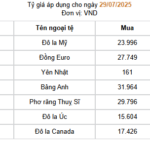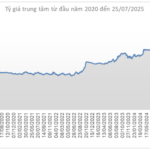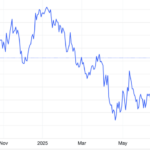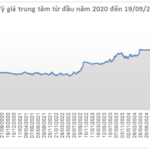On August 5, Deputy Prime Minister Ho Duc Phoc chaired a meeting of the Steering Committee for Price Management, evaluating the results of price management and direction for the remaining months of 2025. The Deputy Prime Minister gave directions on managing electricity, gasoline, and essential commodity prices…
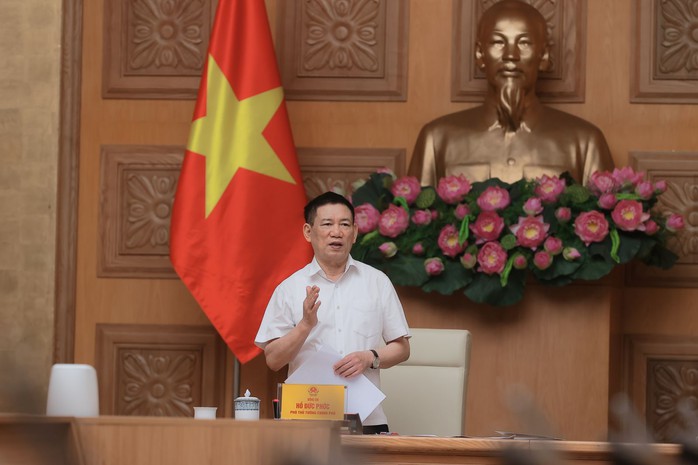
Deputy Prime Minister Ho Duc Phoc gives directions at the meeting. Photo: VGP
At the meeting, the Ministry of Finance informed that since the beginning of the year, the market price level has basically changed according to the law. Compared to the same period last year, the Consumer Price Index (CPI) in the first seven months is estimated to increase by 3.2-3.3%. This is a suitable level to support economic growth, especially when resources are focused on achieving the highest economic growth. Vietnam’s inflation is being controlled within the target set by the National Assembly and the Government, ranging from 4.5% to 5%, contributing to macroeconomic stability.
The Ministry of Finance updated the price management scenario for the last five months, with an increase of about 3.7-4.0%. International organizations forecast Vietnam’s average inflation rate at around 2.9-4.2%. The Ministry of Finance assumes that if the CPI in the remaining months increases at the same rate as the previous month, there is still room for the CPI to increase by about 1.19-1.58% each month to ensure the goal of keeping the average inflation rate in 2025 at about 4.5-5%.
At the meeting, representatives of ministries and sectors discussed price management and specific directions for commodities and services in the coming time, such as gasoline, liquefied gas, electricity, medical services, exchange rates, prices of raw materials, and exports of key production industries. They also proposed solutions to ensure a balance of supply and demand and flexible and effective price management.
Concluding the meeting, Deputy Prime Minister Ho Duc Phoc requested strengthening reasonable price management to promote rapid and sustainable growth.
The Deputy Prime Minister directed ministries, sectors, and localities to pay attention to the movement of essential commodities closely related to people’s lives and business activities, especially gasoline, electricity, and essential foods, to be ready with appropriate management solutions.
The Ministry of Construction and the Ministry of Agriculture and Environment are requested to coordinate with provinces to have fundamental and synchronous solutions to manage the real estate market healthily and suitably to people’s lives.
The Government leader also gave specific directions on managing the money supply and stabilizing the exchange rate of the Vietnamese dong against the US dollar, managing electricity prices, construction material prices, and prices of raw materials for production…
In the coming time, the Deputy Prime Minister requested ministries, sectors, and localities to closely monitor the market supply and demand and price movements of commodities within their management scope to take appropriate measures. Proactively forecast and ensure a balance of supply and demand, especially during high-demand periods for essential commodities such as gasoline, construction materials, food, agricultural materials, and transportation services, to prevent shortages or disruptions that could cause sudden price increases.
In addition, strengthen the effective implementation and supervision of measures such as price declaration, price listing, public information on prices, and strict handling of acts of unreasonable price increases that cause market instability.
The CPI for the first seven months is estimated to increase by 3.2-3.3%.
The Ministry of Finance reports that the consumer price index (CPI) for the first seven months of the year is estimated to have increased by 3.2-3.3% compared to the same period last year. This is an appropriate level that supports economic growth, especially as resources are being focused on achieving the highest possible economic expansion. Vietnam’s inflation is being carefully managed within the target range set by the National Assembly and the Government of 4.5-5%, contributing to macroeconomic stability.
The Greenback Slides: A Sudden Shift in Fortune
“The U.S. dollar took a turn last week, experiencing a decline in the international market as the deadline for higher tariffs loomed. As the week of July 21-25, 2025, unfolded, the implications of President Donald Trump’s trade policies became increasingly apparent, with the dollar’s performance reflecting the market’s anticipation of these changes.”
Japan Concerned as Yen Falls to Four-Month Low
The Japanese yen continued its downward trajectory against the US dollar on August 1st, with the exchange rate reaching a staggering 150.9 yen to one USD at certain points during the trading day.



























